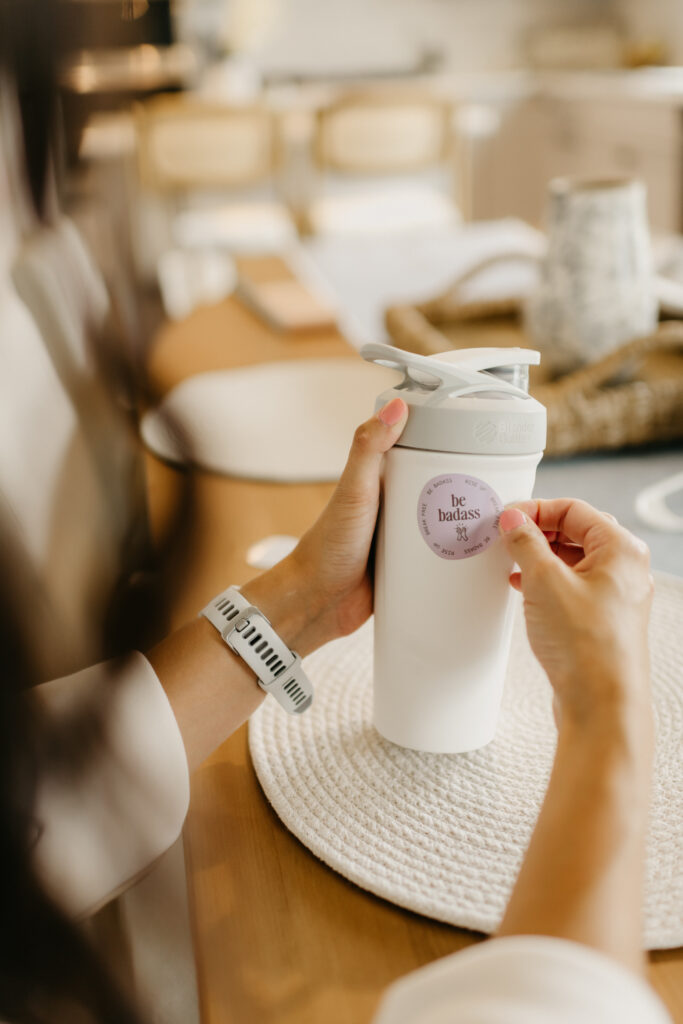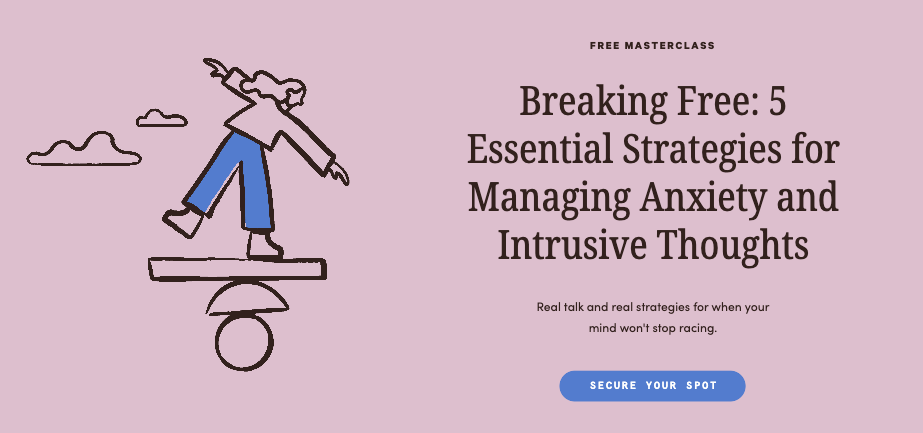OCD & Anxiety Recovery Basics: 5 Moves That Stop the Spiral
September 16, 2025
If you’re stuck in the loop of OCD or anxiety, chances are you’ve been told to try all the things: therapy, journaling, mindfulness, “just breathe.”
But here’s the truth: you’re not broken, you’re overcomplicating.
OCD and anxiety recovery isn’t about throwing a million coping skills at the wall and hoping something sticks. It’s about focusing on a few key moves that actually interrupt the cycle.
Here are 5 powerful (and totally doable) OCD recovery strategies to help you stop the spiral fast.

1. Name the Cycle, Don’t Get Lost in It
Intrusive thoughts? Panic wave? Urge to check? Instead of diving in, step back and call it what it is: the OCD/anxiety cycle (if you’re already nodding along and want to learn more about this cycle and where you’re getting tripped up, check out this 2 hour long masterclass.)
When you label it, you create just enough distance to remember: This is my brain doing brain things. It’s not me. I don’t have to play along.
👉 Quick script: “This isn’t danger. This is the cycle.”
2. Drop the Certainty Chase
The number one trap that keeps people stuck? Trying to feel sure.
- “I need to know for sure this thought isn’t true.”
- “I need to feel 100% calm before I can move on.”
- “I need to know I’m doing ERP right.”
Spoiler: certainty never comes. The faster you drop the chase, the faster you break the loop.
👉 Quick script: “Maybe, maybe not. I don’t need to know.”
3. Resist the Compulsion (Even the Sneaky Ones)
Compulsions don’t just mean hand-washing or door-checking. They can be mental: replaying the thought, Googling, asking for reassurance.
Every time you resist, even once, you send your brain a new message: I can handle this. I don’t need to solve it.
👉 Quick script: “Nope, not answering that question today.”
4. Measure Courage, Not Calm
Stop asking, “Do I feel less anxious yet?” That’s a losing metric.
Instead, ask: “Did I choose courage over comfort?”
If the answer is yes, you won. Even if you felt anxious the whole time.
Recovery isn’t about calm. It’s about becoming the person who can handle being uncalm.
5. Lean Into Micro-Moments
You don’t always need a full ERP session to move the needle. Small, everyday exposures build strength over time:
- Send the email without rereading it 12 times.
- Leave the house with the stove unchecked.
- Let the intrusive thought sit in your brain without spiraling.
These micro-moves compound, and they add up way faster than waiting for a “perfect” practice moment.

How to Avoid Turning These Into Compulsions
Here’s the sneaky part: anything can become a ritual if you’re using it to get rid of anxiety.
- Don’t repeat the quick scripts like mantras. Say them once, then move on.
- Don’t use micro-exposures to “test” whether anxiety goes away. That’s reassurance in disguise.
- Don’t make recovery another box to check, make it a choice to live bravely.
Remember: the goal isn’t to feel better, it’s to get better at feeling.
Your Micro-Wins Checklist
Here’s a cheat sheet you can save or screenshot:
- I named the cycle instead of diving into it.
- I dropped the certainty chase (even for 30 seconds).
- I resisted at least one compulsion today.
- I measured courage, not calm.
- I leaned into one micro-moment of uncertainty.
If you checked even one box today? You’re doing the work.
Want More? Grab My Free Video
If this clicked for you, I want you to take the next step:
👉 Grab my free video: 5 Strategies for OCD & Anxiety Recovery
In it, I’ll walk you through the most important tools you need before you can really move forward with recovery. No fluff, just straight-to-the-point guidance from someone who’s lived it and treated it at the highest level.
Because you don’t need more noise, you need the right strategies, applied the right way.

most popular episodes
Love my podcast?
Episode 112: Postpartum OCD and False Memory OCD
Imagine how in depth I can go in an online course. Instantly downloadable and game-changing. Take the next step towards an amazing life.